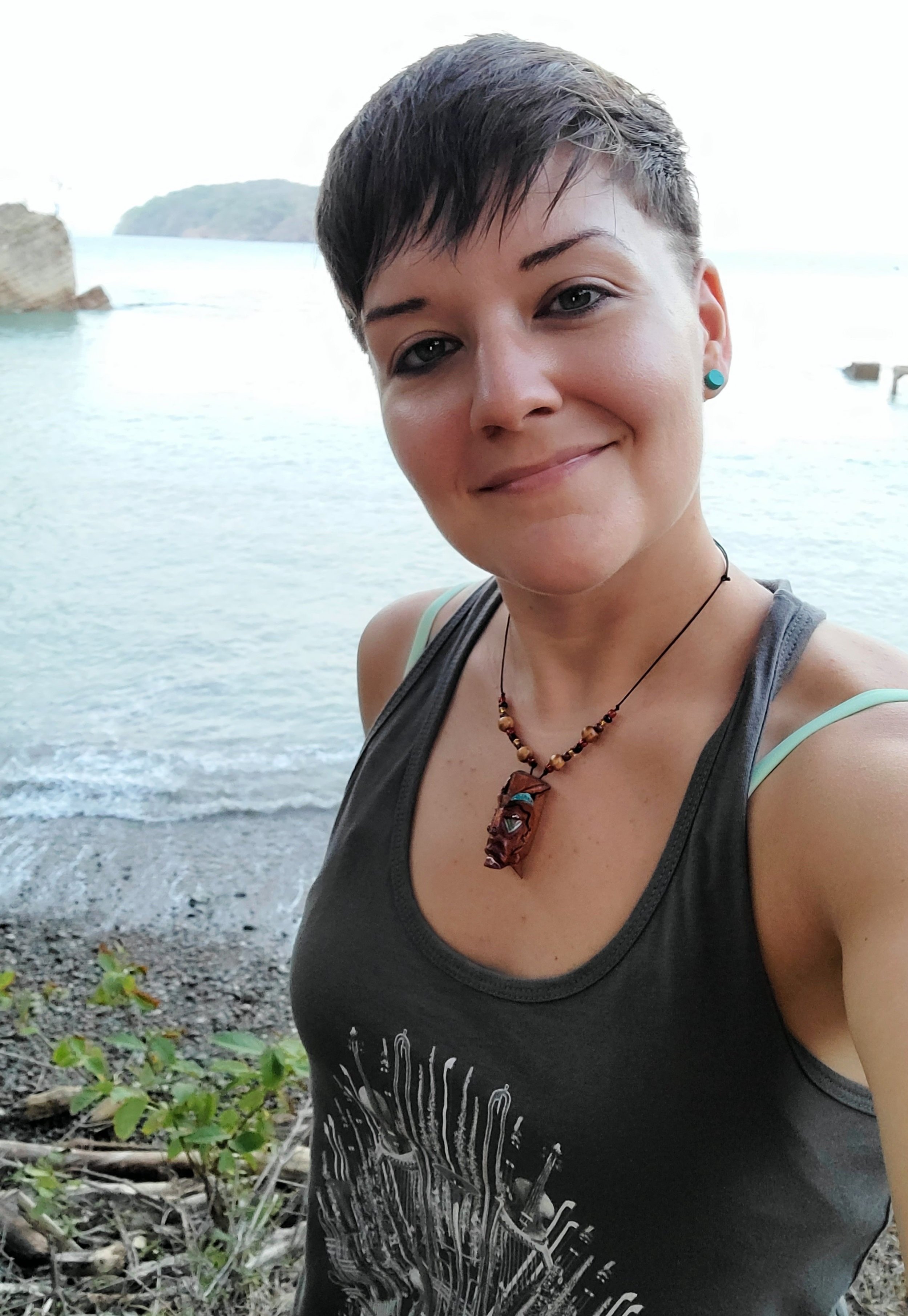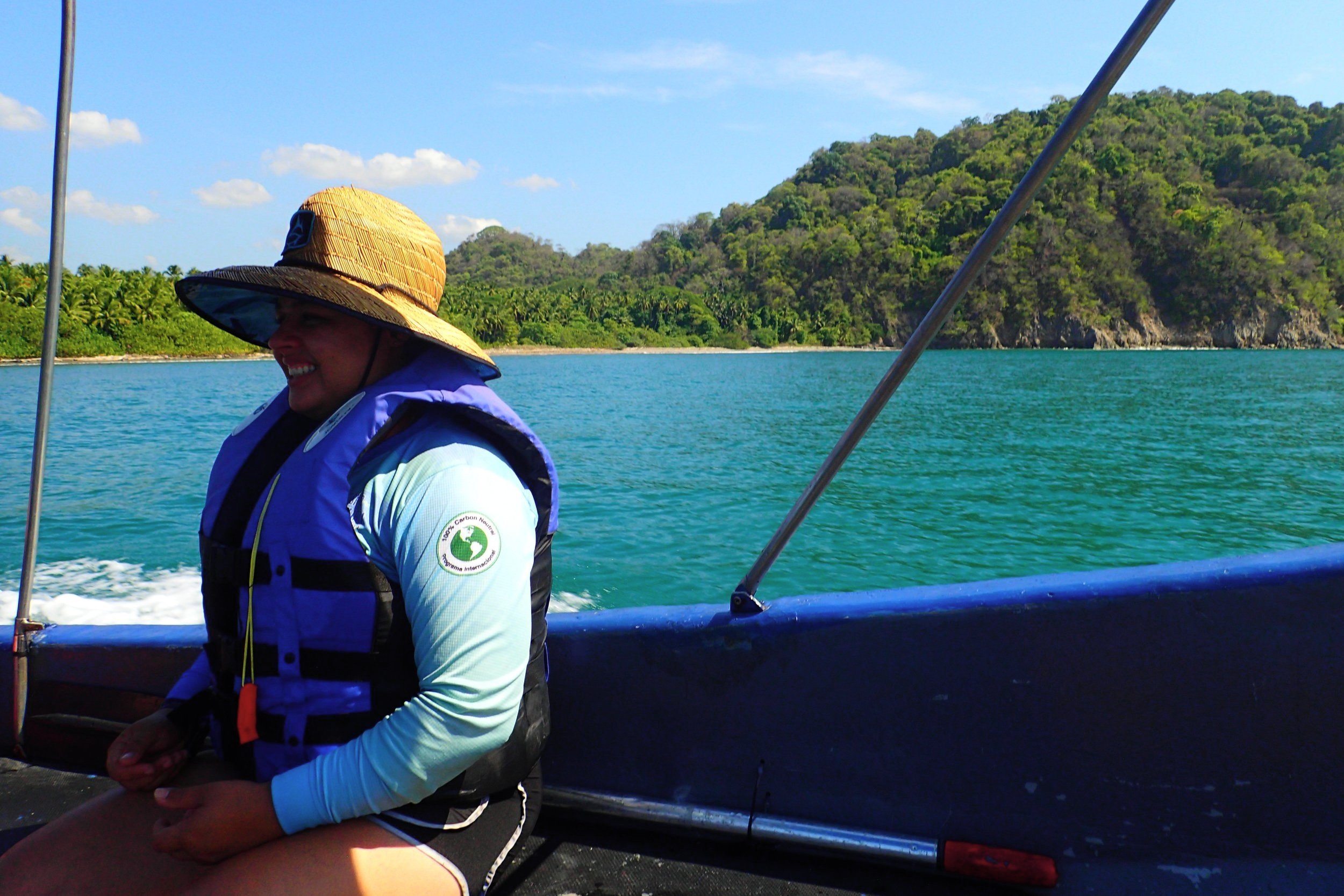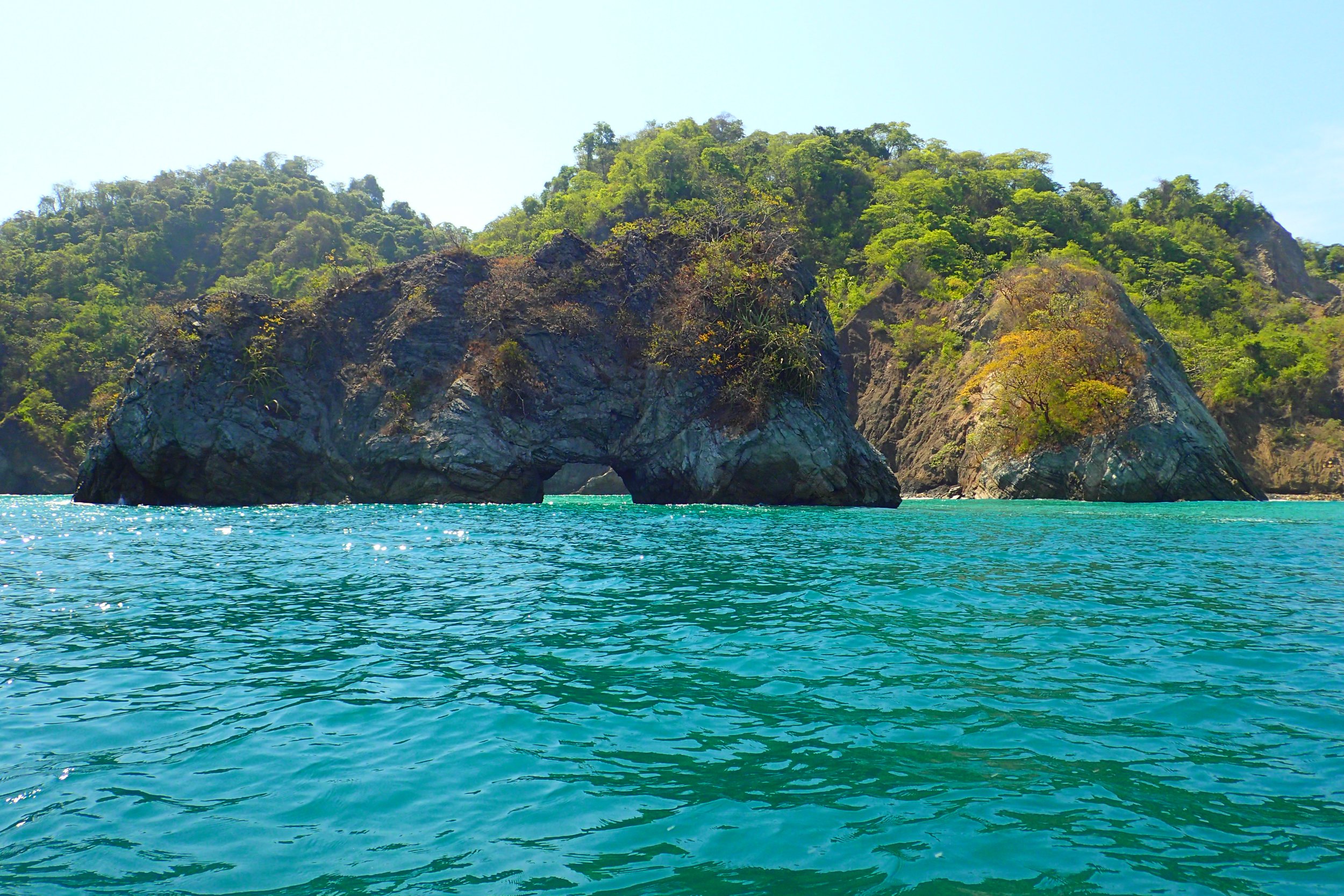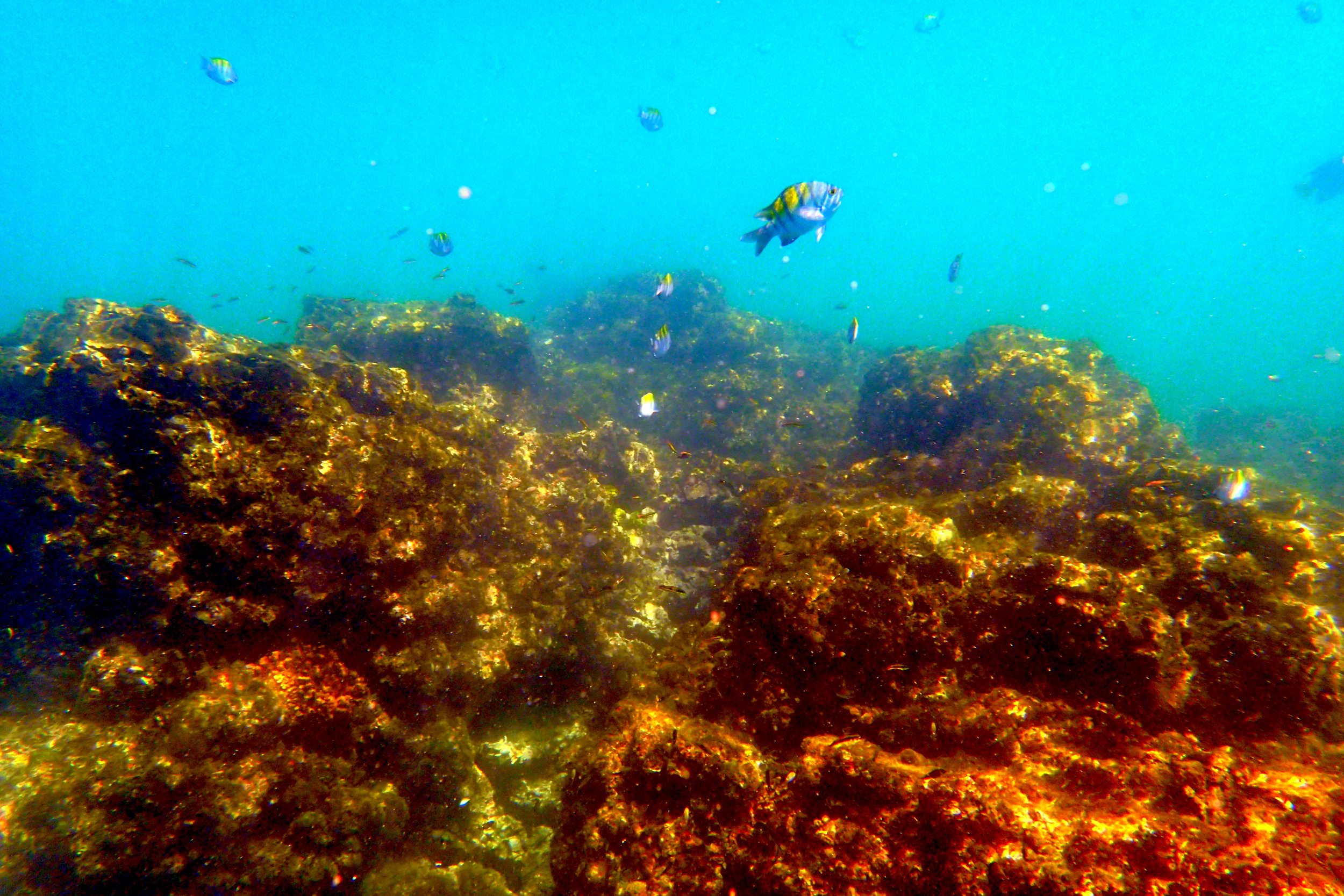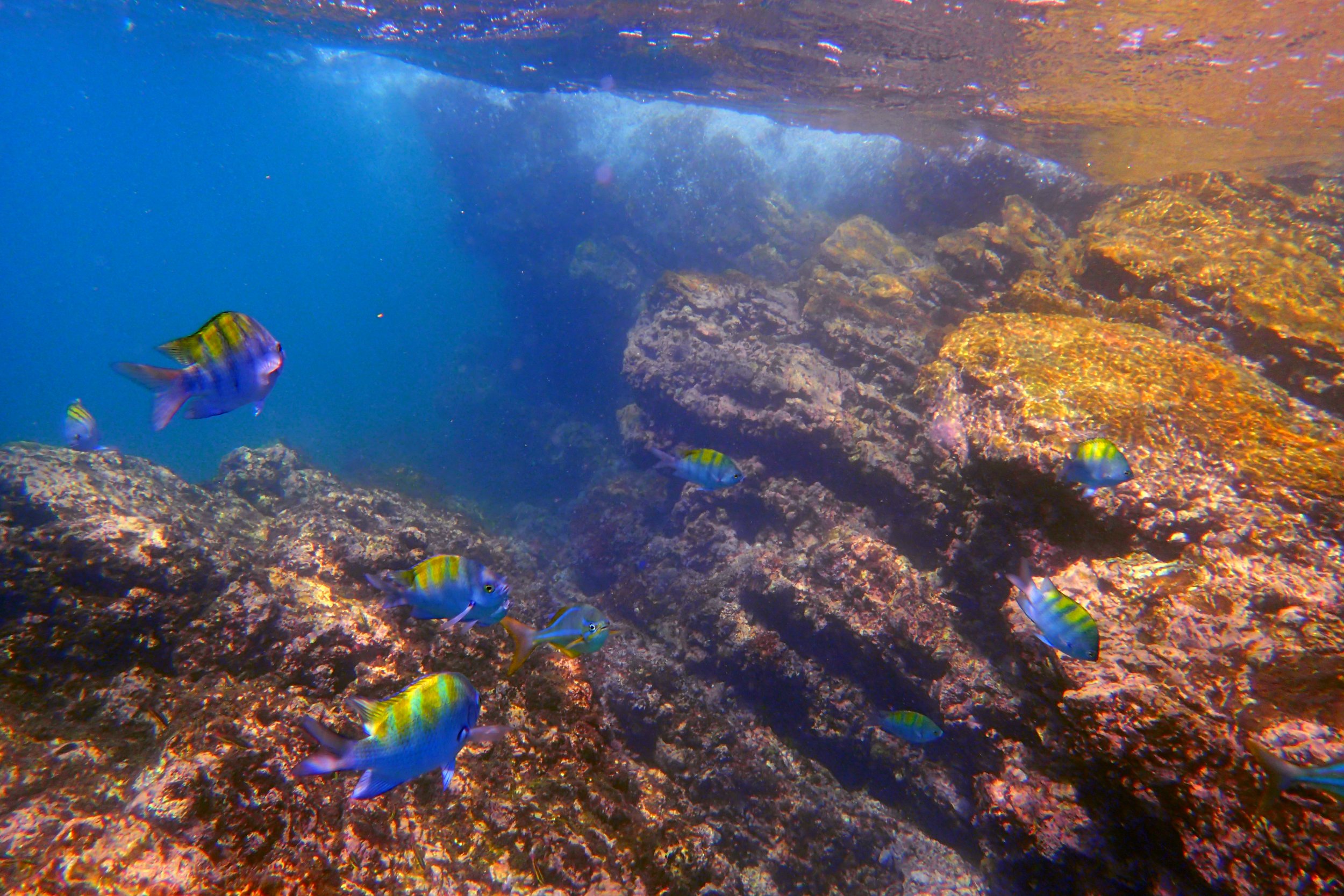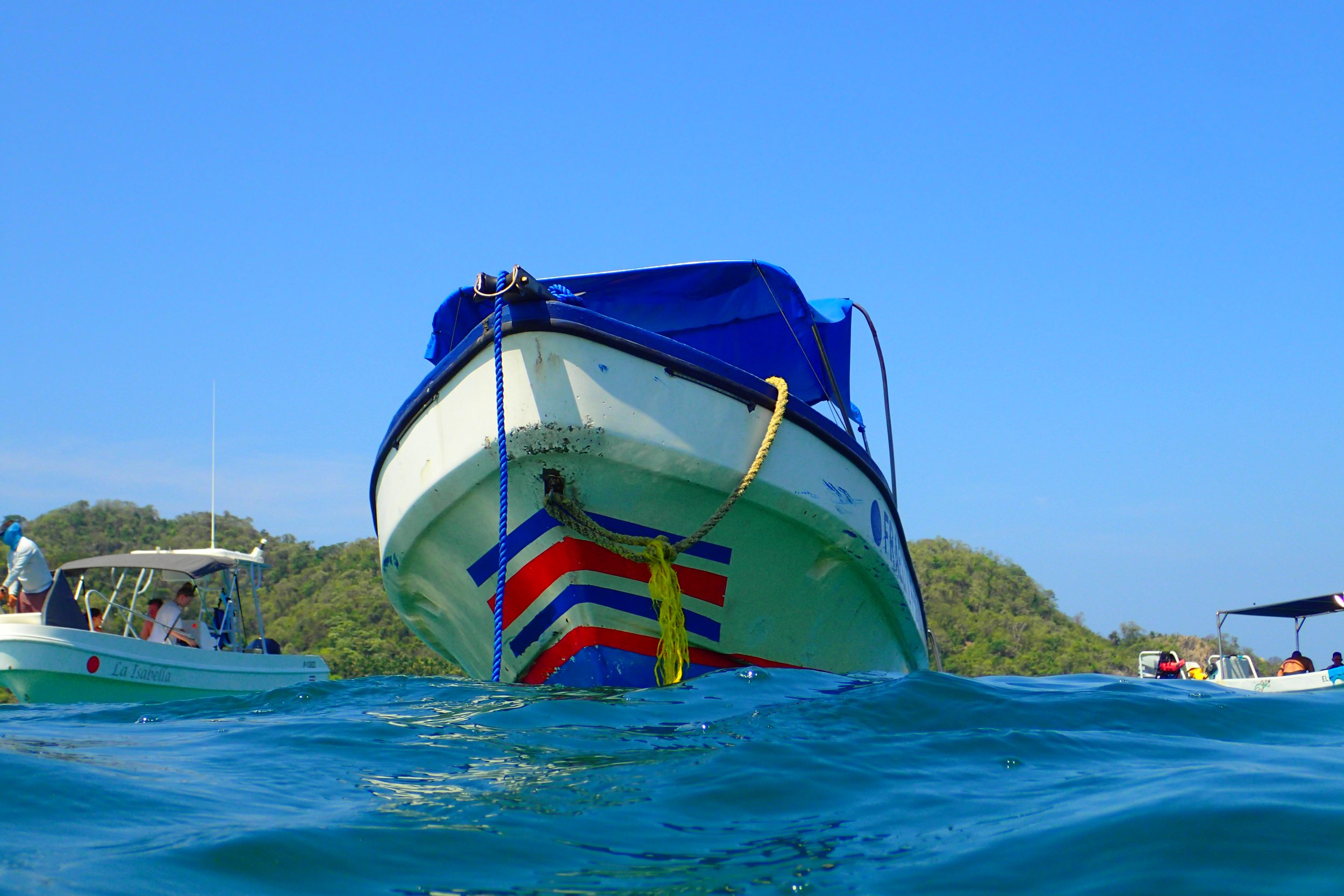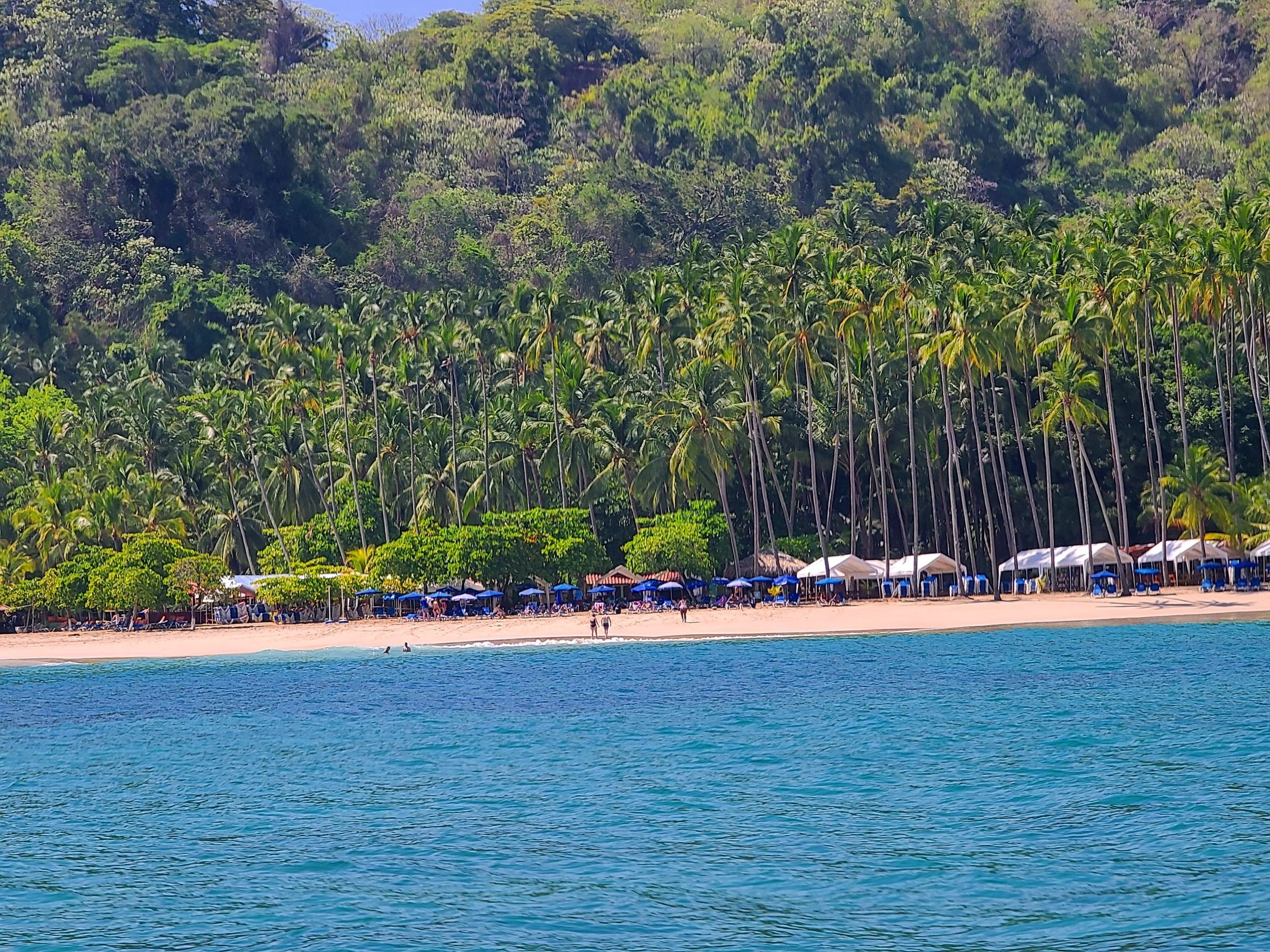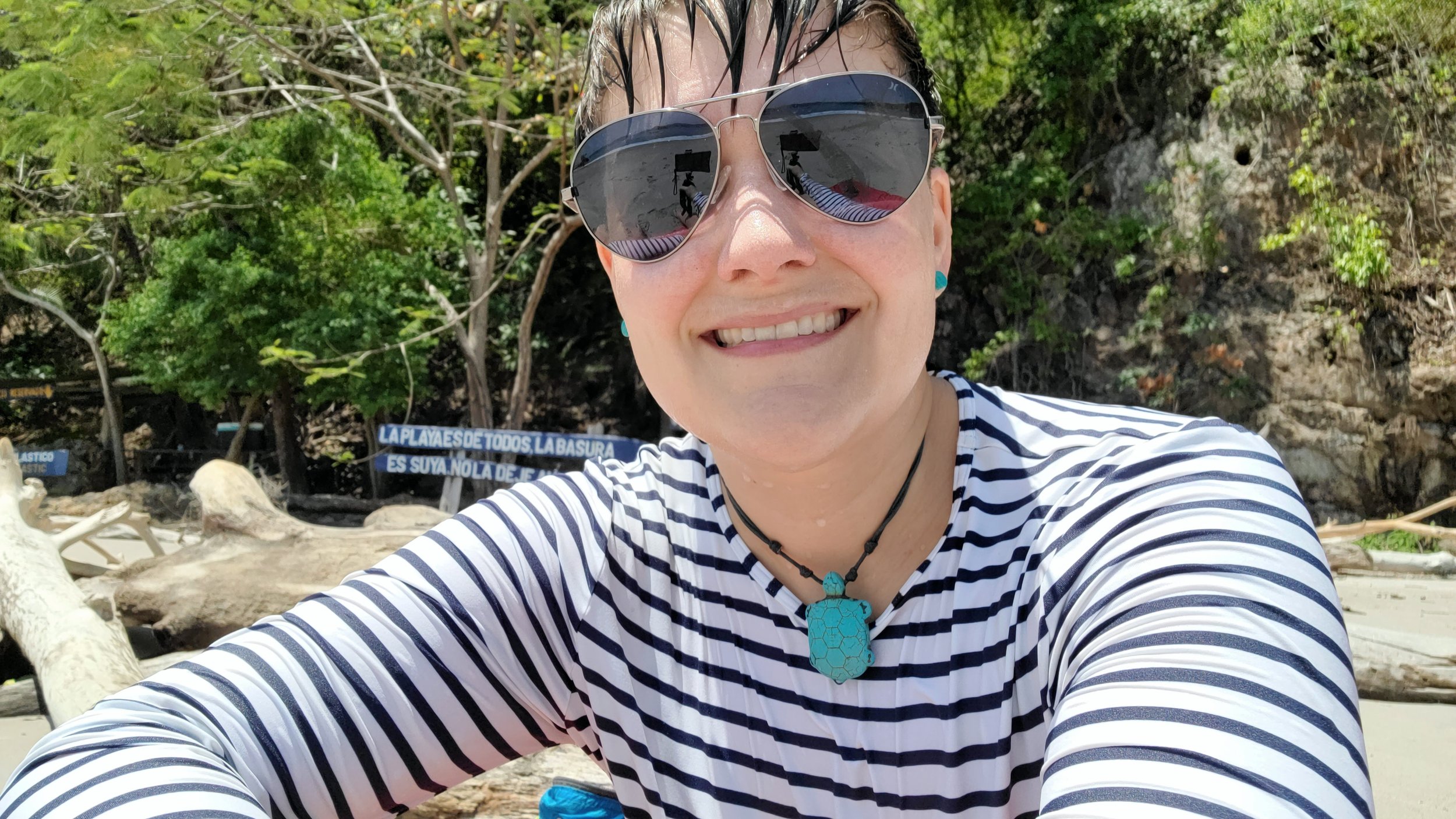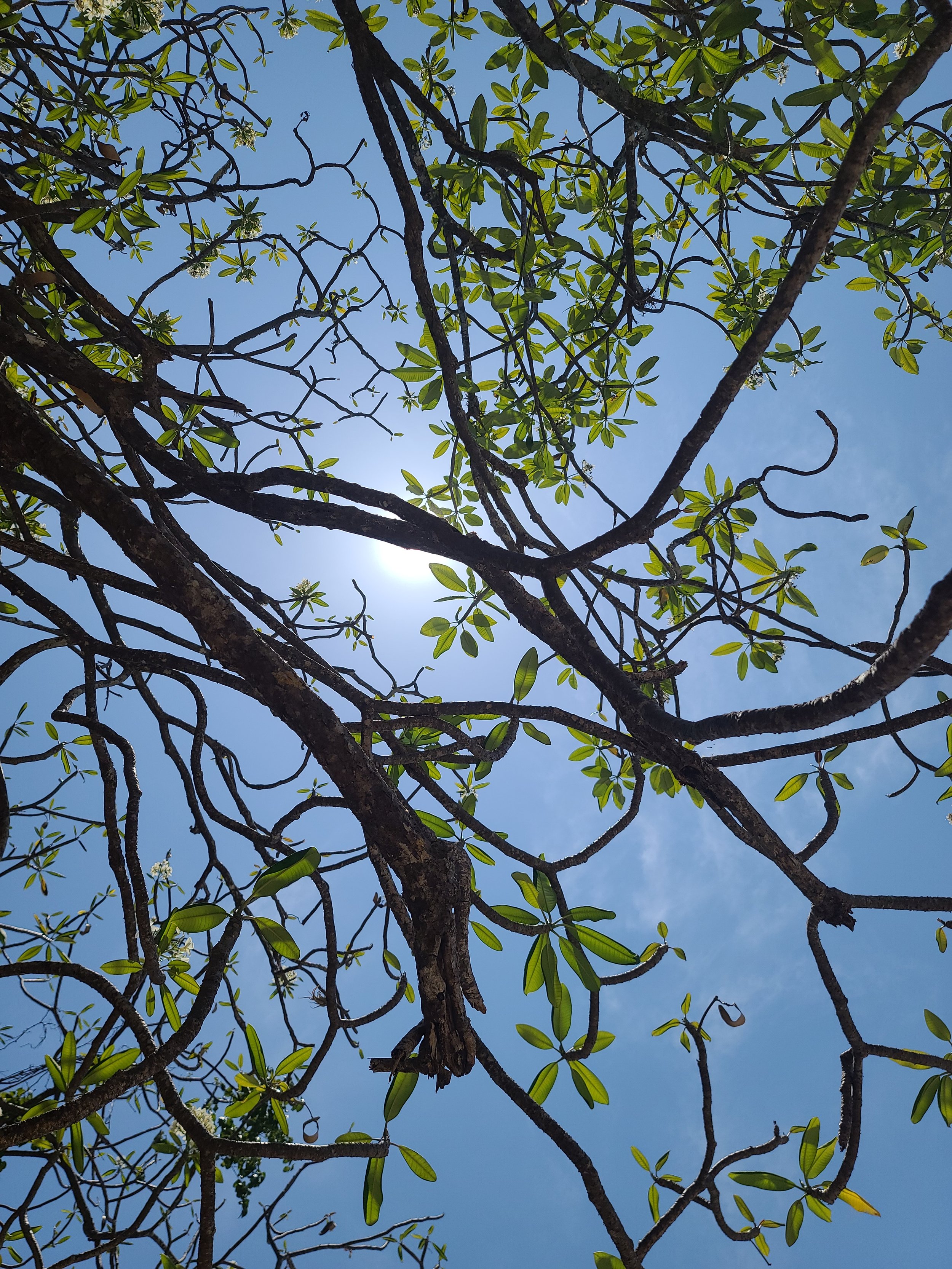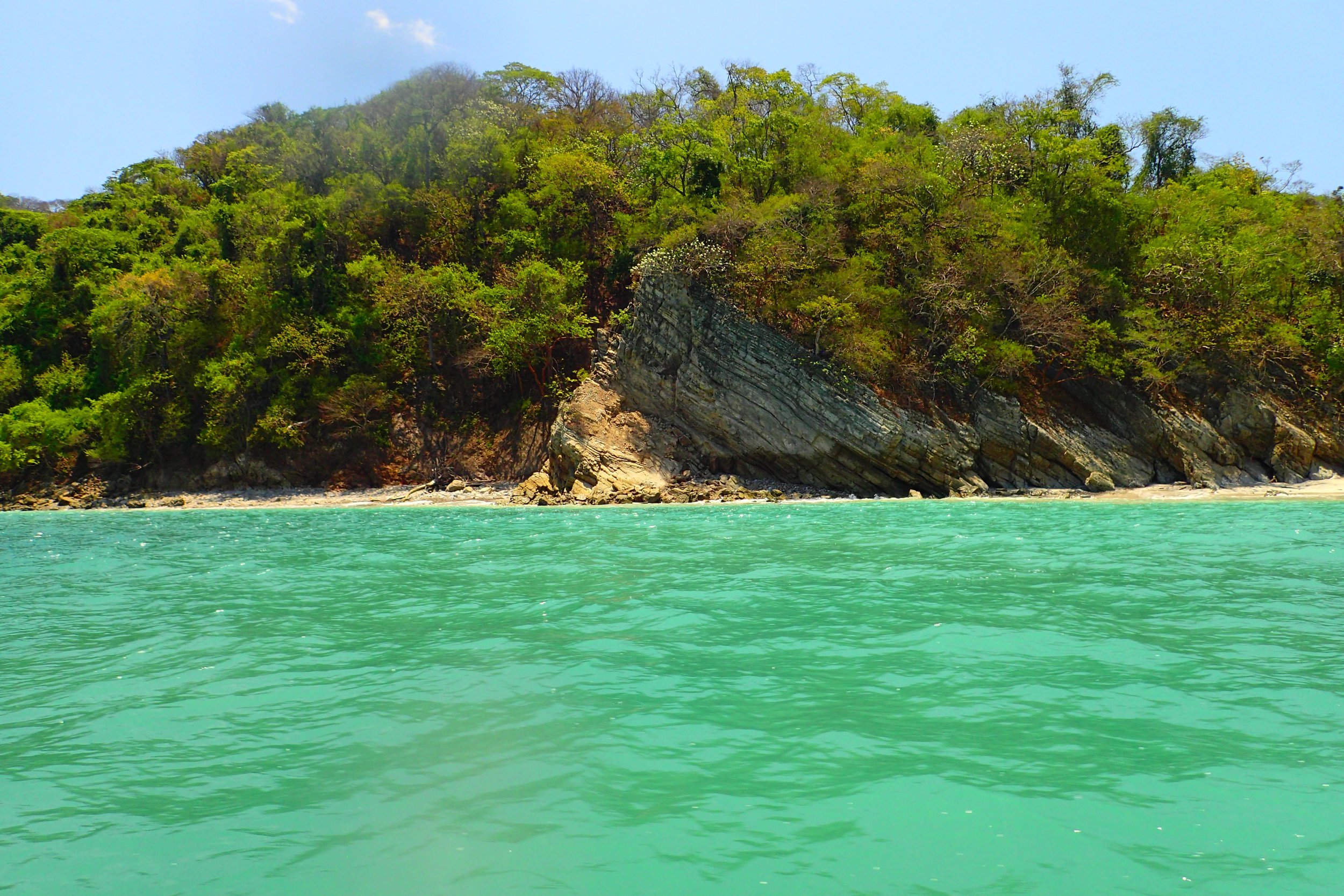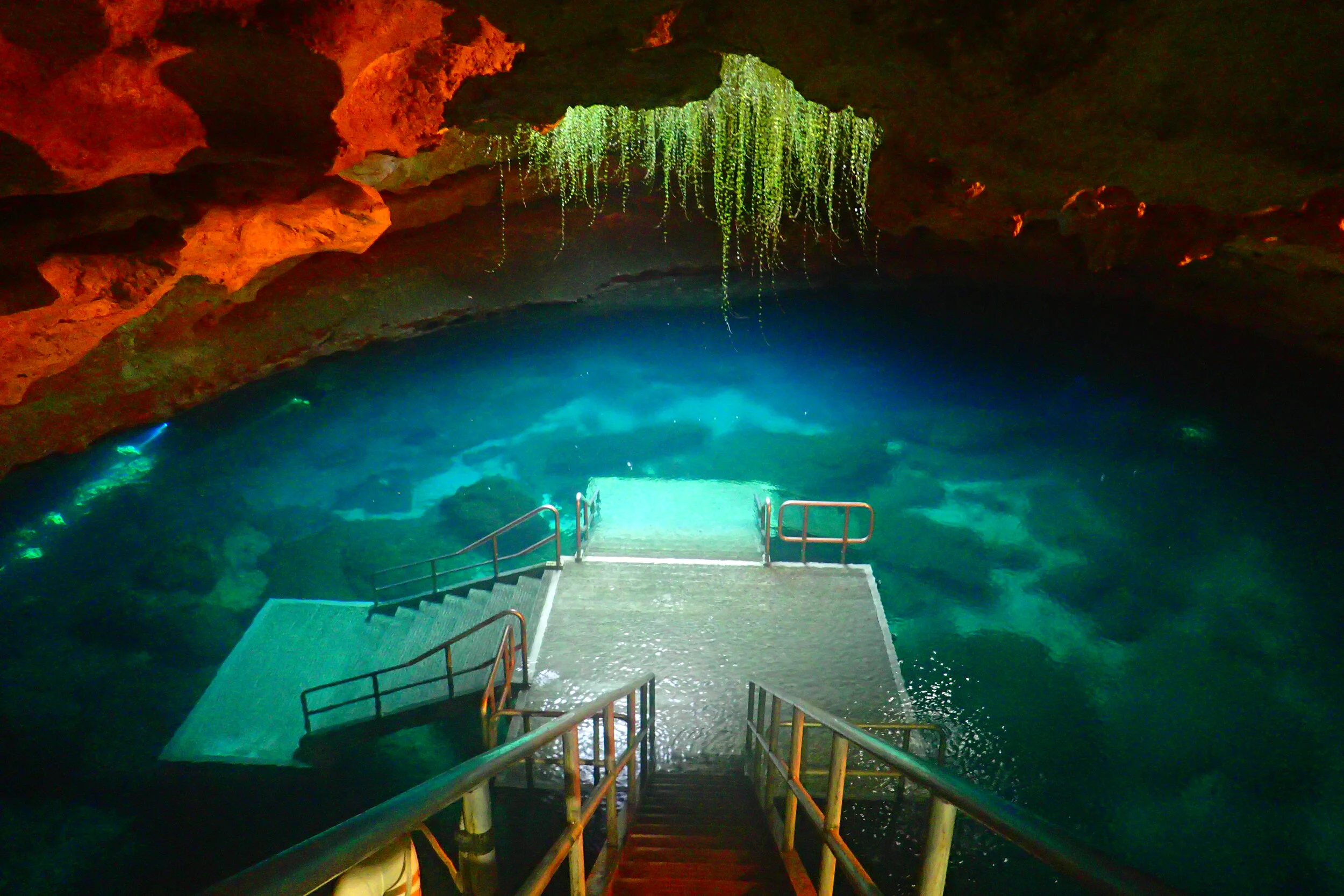I had one night planned for the Nicoya Peninsula region. The reason? I was there for only one thing—to snorkel Tortuga Island.
This was one of those destinations I researched very little ahead of time. I didn’t really know how I was going to snorkel these islands. I just knew they were snorkelable. And if I got as close as I could, I’d figure it out.
Figure it out, I did! I managed to stay overnight in a very inexpensive Airbnb with a lovely local family. And I believe I discovered one of the most accessible, low cost, and small group tours for snorkeling these islands.
I didn’t even know what I was going to get as part of this tour. But I ended up having an awesome time including plenty of underwater sightseeing in addition to quiet beach time with a fresh fruit feast.
Where Are The Tortuga Islands?
There are many Tortuga Islands around the world including in Haiti, Ecuador, Mexico, and Costa Rica. The Tortuga Islands, or Islas Tortuga, in Costa Rica are located off the Nicoya Peninsula in the Gulf of Nicoya, part of the Pacific Ocean.
Where Did I Stay?
For less than $19, I stayed at a local’s home in Paquera through Airbnb. But before I could make it to the place, I had to top off my kölbi SIM card. I pulled into Paquera and immediately lost touch with the Airbnb host, Darling. I had to drive until I could find an ATM because I was out of Costa Rican Colón.
I drove all the way to Los Delfines Golf and Country Club where I found a National Bank ATM. Right outside the club was a convenience store where I could top up on kölbi. This cost me about $30 but well worth it to have the data I needed to keep navigating around the country and communicating with locals via text on a whim!
I texted my host, Darling, and she encouraged me to take advantage of the time left in the day. So I drove around a bit to try to find where I could go snorkeling the next day.
Some internet searching took me all the way to a camping area called Don Trino. There, I learned about one way to get to Tortuga Islands—the Blue Line. But they recommended I try to go from Curu Wildlife Refuge since I have a car. The Blue Line would take an hour to drive there and cost extra because of the fuel. So I drove down to Curu and asked the person working the gate what the cost would be. He told me to arrive when the refuge opens, pay the $15 fee, and then snorkeling would be only $30. Sold!
After that, I found my way back to Darling’s home in Paquera. She met me outside and instead of inviting me in right away, she encouraged me to go check out a couple of local beaches first. I really only went to her house so as not to be rude. So I took her up on her suggestion right away!
I drove a very bumpy dirt road out to Playa Órganos. The sun was starting to set and the sky was growing a light, baby pink which highlighted the waves.
The waters were pretty rough here but I still saw many people here, some pulling in boats and paddle boarding out to sea. This was a very lively, local beach, especially for a Wednesday evening.
I wanted to see the other beach Darling suggested so I got back into Blanca and drove another road that bumped me along over to Playa Camarón. This beach was set below cliffs that I was able to park on top of. There was only one young couple here with me—sitting off to the side under a giant tree.
Otherwise, I had this spot to myself. The water was a beautiful aqua blue. The Eastern sky was turning a rainbow gradient.
I loved seeing the old, dilapidated dock randomly at the center of this lagoon—a focal point of the view.
I stayed there, sitting with my feet out the driver’s side door of Blanca, enjoying the quiet sound of the waves. Soon, it got darker but I left with enough light to easily navigate the dirt road back.
Before heading to Darling’s home, I stopped at my first authentic soda. A soda in Costa Rica is a family-owned, roadside restaurant. They are always super basic, usually with outdoor or open air seating, a counter to order and pay, and kitchen in back. This one had coolers for drinks which was pretty fancy! It’s always inexpensive, homemade, and where all the locals go to eat!
There’s always traditional Costa Rican cuisine at the sodas. I ordered “Casado,” a typical platter of chicken, beans, salad, and fries. I was hungry after the long drive of the day so this was very good and filling!
With a full belly, I headed back to the Airbnb. I met Darling and she navigated my car into a locked area for security—apparently the neighborhood wasn’t known to be the best.
Inside, I found a nice, lived in home. My room was simple but cozy—my own space with a fan was all I needed for one night stay here!
I went almost right to sleep. I had a tour planned for the next morning!
I woke up very early to shower and have breakfast. In the kitchen, I met Darling’s father. There was a bit of a language barrier but Darling helped and we managed to discuss a lot over a light breakfast I made with some food I still had from Monteverde.
Darling and I really hit it off. She loved hearing about my life and adventures. I asked them both about their life, too. She shared how she supports and cares for her autistic son. I met her son the night before. He was very kind to me. I told her she was doing great and was a great mom and she told me how much she appreciated that. She then told me about an amazing waterfall up North with unimaginably blue water. She always wanted to visit. I told her I might try to go now that she showed it to me!
Honestly, nothing beats these moments of connection with locals that you get through couchsurfing and single room Airbnb stays.
Soon, it was time to say goodbye. I packed all my things and threw them back into Blanca and headed south again toward Curu.
Darling (right) and her father (left)
What is Curu Wildlife Refuge?
Curu is located on the southeastern side of the Nicoya Peninsula directly across from the Tortuga Islands. The park has 1,496 hectares of tropical forests, mangroves and grasslands along the Nicoya coast.
The Curu signage has an extremely foreboding message that also reflects how important nature is to the Costa Ricans:
Todo lo que le pase a la tierra, más tarde, le pasará a sus hijos.
Everything that happens to the Earth will later happen to your children.
We better start taking care of it then!
This park includes some camp sites and cabins you can rent to stay here overnight. While day visitors access the park from 7:00am to 4:00pm, guests in the refuge’s cabins stay all day and can partake in night tours.
There’s lots of activities you can engage in from whale watching boat excursions to hiking trails.
I walked up to the main area and signed up for snorkeling on the spot. I filled out some forms, paid in cash, and then got my gear together as we waited for the boat. I had my own mask but rented fins and also had to wear a life jacket for the tour.
The Tortuga Snorkel Tour From Curu
Just like in Drake Bay, we walked up to the boat as it backed up onto the beach and loaded on from the rear.
I was on the boat only with about 3 other tourists—they were older adult, German friends traveling together. This was awesome because I had seen online other Tortuga Island tours leaving from popular areas like Jaco with many people on board.
This felt like a secret sort of way to access the Tortuga Islands. While Jaco is near the airport city of San Jose, the boat ride is longer and therefore more expensive. Getting here would take longer but the tour is less expensive and more private. So if you’re already planning to be in the area, it makes sense to visit Tortuga from here!
Our tour guide was a young woman who works for Curu park. She gave a lot of great information in English about the islands. One of the major islands is called Alcatraz—yes, like the federal prison island in San Francisco.
In front of Alcatraz island is Paso Arco Iris or “Rainbow Pass”—a rock formation in the shape of an arch. The water here was an incredible aqua blue!
The arch was big enough for our boat to fit under but not big enough to risk it! I was grateful to our tour guide for taking photos of me with the arch.
She explained that Alcatraz is a part of the Tortuga Islands and is a 70-hectacre federal island not used for tourism. When looking at it, she said, it looks like the shape of a turtle!
We moved right along in between Alcatraz and Tortuga island. Tortuga means turtle which is why this island is such a popular name around Spanish speaking countries.
You may recall that I learned how to SCUBA dive on Koh Tao in Thailand. Koh Tao means Turtle Island! So this was also my second Turtle Island adventure in a totally different part of the world.
We were heading to a small rock outcropping off the main islands here. This is where the best snorkeling is in the area—because the water is the clearest.
We pulled up closed, threw down an anchor, and the tour guide said we could jump right in. We would be staying for up to an hour.
The water was, indeed, very clear here and the rock and surrounding reef was teeming with all kinds of fish! The main and most numerous were the typical Sergeant Major fish—recognizable by their striped backs with a little yellow.
I also spotted some really pretty Cortez Rainbow Wrasses.
There were also king angelfish…
And there was a smooth trunkfish in the mix.
I even saw a few triggerfish…
The reef here had some really pretty colors, too, including soft indigo blue corals.
The best part was seeing all of the big schools of fish and getting to swim on through them and get pushed in the surge with them.
I encircled the whole rock twice and took my time before heading back to the boat. Some other tour boats pulled up around this time but I still didn’t run into other snorkelers here. Even the people I was on the tour with didn’t get in my way.
In the video below, the larger silver fish with the yellow tailfins are gafftopsail pompano fish! Watch to get a feel for my whole snorkel experience from boat ride arrival to departure.
Beach Time On Tortuga Island
The tour continued after the snorkel experience over on Tortuga Island. Our guide gave us the choice of going to the main beach, where most of the tourists and tour groups land, or next door to the quiet Playa Tropical. We all chose the latter.
I am glad my group was on the same page about keeping this tour private!
Our beach was only separated by a small rock outcropping but it did wonders for making my experience feel like I was stranded on a desert island!
There was even a fun little rock formation here for photos—something the other beach didn’t have.
Our guide used a little hut in the back of the beach to set out some snacks for us at a picnic table. There was fresh, sweet watermelon, pineapple, and coconut. I have to admit, I ate more than my fair share!!!! :) YUM!!!
I walked further down the beach away from my fellow tourists and found a quiet area under some flowering beachside trees.
These trees cast a beautiful shadow across the packed sand. I had fun taking some timed photos here.
The driftwood on the shore was also fun to capture and created a beautiful, desert island feel.
We spent at least another hour on the beach just exploring, relaxing, swimming, and snacking. I had such a nice time here and the hard packed sand on Tortuga Island was perfect for writing!
On the way back to Curu, we took the long way to see some of the other beaches along the Nicoya Peninsula coastline. The water was just an unbelievable color at some of these beaches!
In Conclusion
I had a wonderful, small group snorkel tour of the Tortuga Islands from Curu Wildlife Refuge! I’d recommend folks try to visit from Nicoya Peninsula rather than going from more crowded launch points like Jaco. This tour was perfect for my solo travel needs and to keep the cost low and timeframe short.
Once we were back, it was still only about 12pm. There was a full day ahead which was exactly what I needed for my drive ahead. I was headed for the West coast and another popular, tourist city. I was hoping to make it there before sunset!







